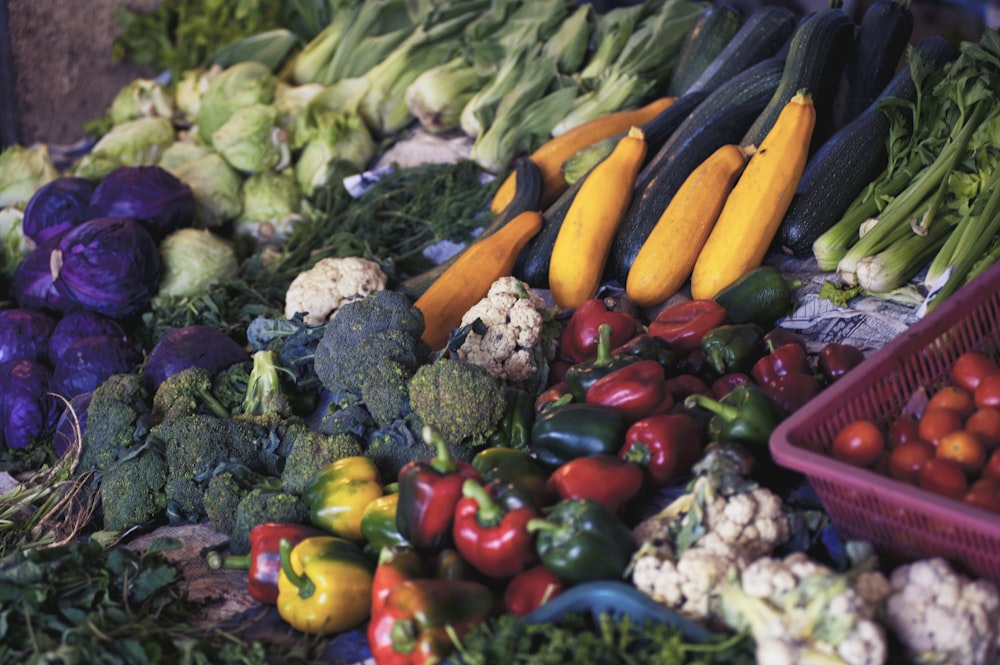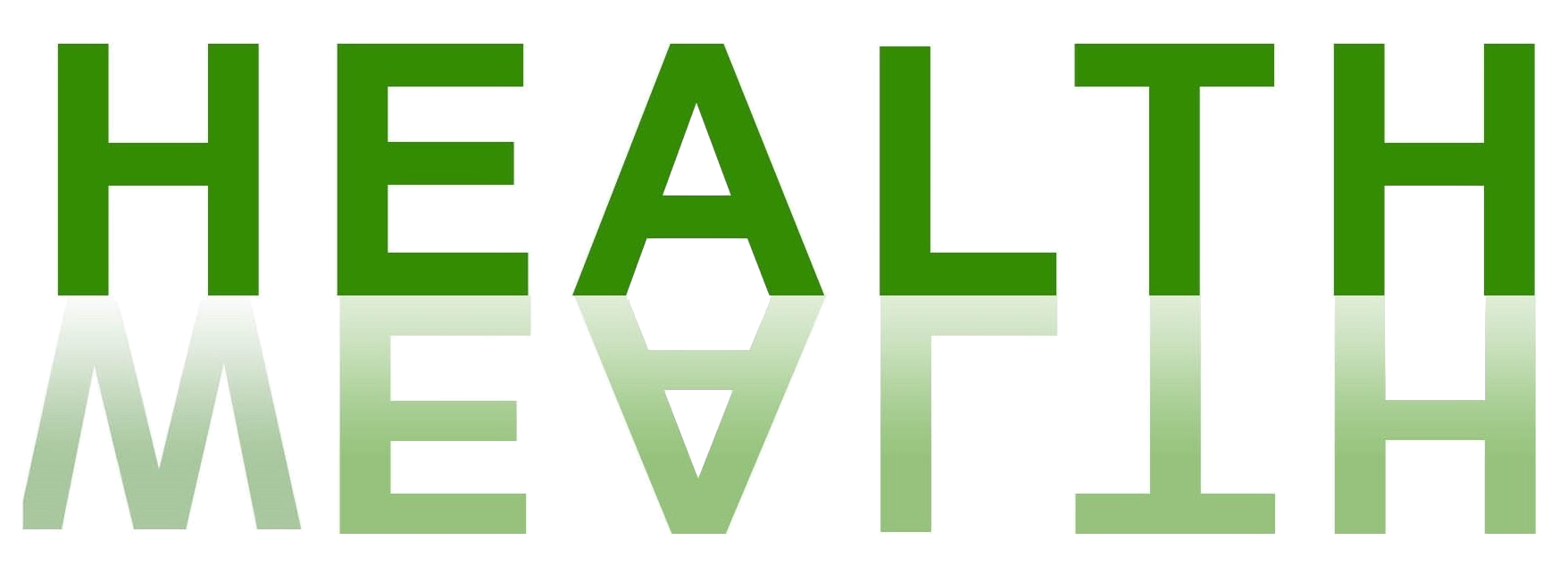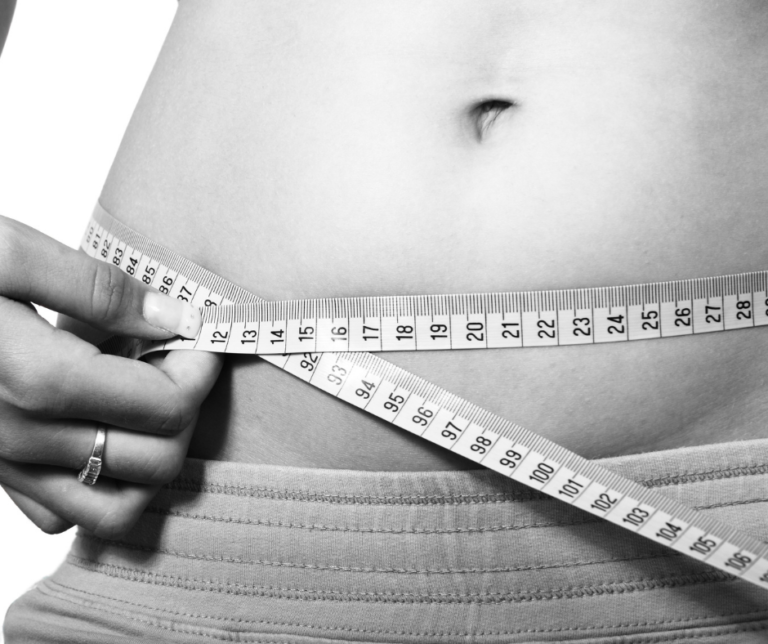The 9 Most Popular Diets: Pros and Cons You Should Know
If you are like one of almost 45 million other Americans, you plan to go on a diet this year. Some statistics show that up to 50% of American women and 25% of American men consider themselves to be “on a diet” at any given time.
With so many diet methods available, how do you figure out which one is right for you? Aren’t they all the same? Why is it all so confusing? To get rid of these questions and diet smarter, keep reading this article.

Talk to your doctor first- maybe.
Before you begin a diet, you may want to talk to your doctor if you are on any medications or are managing a specific chronic illness. Your doctor can examine your medical problems and medications that can affect your weight and offer guidance on a program for you. Plus, you may be able to discuss how to exercise safely, especially if you have physical or medical challenges or chronic pain with movement.
Your comfort level with dieting and nutrition should dictate who you consult. Keep in mind that most doctors get little to no nutrition education. In this case, make sure you find a health professional that is open to discussing your specific needs and taking a holistic approach to your health. This might involve a registered dietitian, functional medicine MD, etc.

1. The 5:2 diet.
The 5:2 diet is based on the principle of intermittent fasting (IF) – it involves eating your typical diet for five days a week and fasting on the other two days. Other than losing weight, fans claim the 5:2 diet can boost lifespan and brain function, and protect against problems such as dementia and Alzheimer’s disease.
However, proof of the effectiveness of the 5:2 diet is very limited when compared with other types of weight loss techniques.
Pros.
Sticking to a regimen for 2 days a week is more achievable than 7 days, so you are more likely to persevere with this way of eating and successfully lose weight. Two days a week on a diet can result in greater reductions in body fat, insulin resistance, and other chronic diseases.
Cons.
The non-restricted days do not mean unlimited feasting. While you don’t need to be as strict about your calorie consumption, you still need to make wise choices and be physically active.
Skipping meals could make you feel faint, irritable, give you headaches and make it difficult to concentrate, which can affect work and other daily tasks. Other reported side effects are difficulties sleeping and daytime sleepiness, bad breath, and dehydration.
Final Verdict.
The 5:2 is an easy way to reduce calorie intake. There are numerous versions of this diet, with some more safe than others. Many studies on intermittent fasting are short-term, involve small numbers of subjects, or are animal-based.
If you try to follow it, opt for an evidence-based plan based on healthy, balanced eating and written by a dietitian, such as the “2-Day Diet”. It’s important for your health to avoid nutritional deficiencies, dehydration, and overeating on non-fast days. Never try to delay or skip meals if you are pregnant, have had, or are prone to eating disorders or diabetes.

2. The Dukan diet.
Created by French doctor Pierre Dukan, this diet plan stresses high protein and low carbs. The rationale is that the body will be forced to burn fat in lieu of the presence of carbs. Thus, weight loss is intended to start off rapidly and then become more gradual.
The Four phases.
The first phase, also called the ‘attack’ phase, lasts for 1-10 days and calls for eating lean protein. Other than this, the user will also consume a tablespoon and a half of oat bran per day, and drink 6 glasses of water. No vegetables or other carbs are allowed.
The ‘cruise’ phase is next. During this phase, which will last for few months, non-starchy vegetables can be reintroduced, along with an extra half teaspoon of oat bran.
The third phase is ‘consolidation’. This is followed for 5 days per lb of weight loss. Vegetables are allowed each day, as is one serving of fruit and a serving of hard cheese. Two slices of whole grain bread per day are also allowed. On one or two occasions during this phase, the user is allowed a ‘celebration’ meal where any food is permitted.
‘Stabilization’ is the name of the last phase. From this point on, the user will eat as they please for 6 days a week. On the remaining day, they must observe the restrictions from the first phase and eat only lean protein. 3 tablespoons of oat bran are eaten every day, and twenty minutes of walking a day is also encouraged.
Pros.
The rapid rate of weight loss at the start of the plan can be a significant motivational factor for many. It’s simple to grasp and the user can refer to the approved foods list, without having to check calorie amounts.
There is no specific limit on the amount of approved foods the user is permitted during the attack phase provided they follow the rules.
Cons.
The attack phase can be difficult to sustain. A lack of carbs can cause tiredness and dizziness, and the lack of fiber from veggies and grain could induce constipation. It can be unsuitable for those with different health conditions (such as heart or kidney disease), and those with other diseases (such as diabetes) will need to consult with their doctor before embarking on this diet, as their medication administration may need to be adjusted.
Final Verdict.
The first phase of this diet is among the hardest to follow, and the restrictions are such that it should not be undertaken lightly by those with dietary conditions. More research is required to figure out whether diets such as this one are sustainable and healthy in the long term.

3. The Paleo diet.
The paleo diet, also called the caveman diet, consists of foods that can be hunted and fished – including meat and seafood – and foods that can be gathered – such as eggs, nuts, seeds, fruits, vegetables, herbs, and spices.
It’s a diet based on the supposed eating habits of our hunter-gatherer ancestors during the Paleolithic age, before the development of agriculture around 10,000 years ago. That means cereal grains (including wheat), dairy, refined sugar, potatoes, and salt – as well as anything processed – are strictly off the menu. There is no official “paleo diet”, but it is usually seen as a low-carb, high-protein diet, with some variations on carbohydrate and meat intake.
Advocates say the paleo diet is a long-term healthy eating plan that can help you lose weight and cut down your risk of diabetes, heart disease, cancer, and other health problems. Most studies on the paleo-type diet are small, and more long-term research is required to show conclusively whether or not it is as effective as some people claim.
Pros.
The paleo diet motivates you to eat less processed food and more fruit and vegetables. Cutting down your consumption of high-calorie foods can reduce your calorie intake and help you lose weight. The diet is easy and doesn’t require calorie counting. Some plans go by the “80/20” rule, where you’ll get 99% of the benefits of the paleo diet if you stick to it 80% of the time. This flexibility can make the diet easier to stick to, so you are more likely to be successful.
Cons.
There are no specific records of the diet of our Stone Age ancestors, so the paleo diet is widely based on educated guesses, and its health claims lack scientific evidence. Most versions of the diet call for large amounts of meat, which runs counter to current health advice on meat consumption.
Many versions ban dairy products and whole grains, which can form part of a healthy, balanced diet for some poeple. Like all high-protein diets, the paleo can be expensive, depending on your choice of meat cuts. It’s hard to follow without eating meat, seafood or eggs, so it’s not one for vegetarians!
Final Verdict.
Most versions of the paleo diet exclude entire food groups, raising the potential for nutritional deficiencies unless careful substitutions are made, and dietary supplements may be necessary.
The diet has some good aspects, so an adapted version that doesn’t ban any food groups – such as whole grains, dairy, and legumes – would be a better choice. The diet lacks variety, so there’s a risk you’ll get bored quickly and give up. If you want to copy your paleolithic ancestors, you’re better off following their activity levels, rather than their alleged diet!!

4. The Atkins diet.
The Atkins diet was created by Dr Robert Atkins in the 1960s and explained in his 1972 book, Dr Atkins’ Diet Revolution. It is perhaps one of the most well known and hotly debated low carbohydrate diets in history.
The Four phases.
Those following the Atkins plan go through four ‘phases’.
During phase one the following rules can be observed:
- A limit of 20g in ‘net carbs’ daily; sources of which are specified in the plan.
- Protein can be sourced from red or white meat, fish, eggs and cheese.
- Full-fat dairy such as butter, margarine or cream are permitted.
- No carbs such as pasta, grains, bread and starchy vegetables including potatoes.
- No nuts, seeds, legumes or pulses.
- No caffeine or alcohol.
This phase is adhered to for a minimum of 2 weeks. Once you’ve reached a weight that is close to your target, you can move on to phase two.
Also referred to as the ‘balancing’ phase, from the second phase you can begin to reintroduce more low carb fruit and vegetables into your diet, as well as some grains and alcoholic drinks. Net carb intake is increased by 5 grams per day until 50 grams is reached.
Phase three calls for reintroducing yet more carbs, again gradually each day, until daily net carb consumption reaches 80 grams.
The final or ‘maintenance’ phase follows this pattern of slight daily increases until you hit a daily net carb total of 100 grams. The idea is that your weight will stabilize at this level of carb consumption.
Originally, the Atkins diet was not significantly discriminatory about the kinds of protein and fats which were suitable for consumption. The plan has since been revised, now emphasizing the importance of choosing healthy fats and making nutritional choices.
Pros.
The Atkins diet plan is a simple one. Making it useful for those looking for instant results, and the consequent motivational boost.
Cons.
Increasing protein intake can make food shopping more expensive. For those who don’t manage to eat sufficient protein during the early phases of the diet, the body can burn muscle in order to get the energy it needs. This can have the effect of lowering metabolism and making weight loss more difficult.
Final Verdict.
Decreasing intake of whole grains and dairy can lead to a drop in calcium, potassium and fiber levels if your diet is not well balanced.
Fewer carbs can increase the likelihood of headaches and irritability, and cause the body to produce ketones. This substance is an acid which can cause the breath to smell differently.
This plan is somewhat contradictory to more general health advice, which states that red and processed meat should only be consumed in moderation. Yet, the Atkins diet can hold appeal for those looking to get quick results.

5. Alkaline diet.
The alkaline diet is based on the idea that modern diets trigger our body to produce excessive acid. The theory is that excess acid in the body is turned into body fat, which results in weight gain. High acidity levels have also been blamed on inflammatory conditions such as arthritis, osteoporosis, tiredness, fatigue, anxiety, and kidney and liver disorders.
The diet calls for cutting back on acid-producing foods such as meat, wheat and other grains, refined sugar, regular salt, dairy products, caffeine, alcohol and processed foods in favor of “alkaline foods”, which cut down the body’s acidity levels.
This translates into a variety of fruit and vegetables. The idea is that an alkaline diet can help maintain the body’s acidity at healthy levels. There are a few versions of the alkaline diet. Some followers adopt the “80/20 rule”, which consists of a diet based on 80% fruit and veg and 20% grains and protein.
Originally created to help prevent kidney stones and urine infections by using diet to adjust the acidity levels in the urine, there is very little evidence to support the diet’s more recent health claims. The weight loss observed among followers is very likely to be the result of eating a variety of fruit and vegetables and cutting down on sugar, alcohol and processed foods, which is standard healthy weight loss advice.
Pros.
The diet consists of a variety of good healthy eating advice, such as cutting down on meat, staying away from sugar, alcohol and processed foods, and consuming more fruit and veg, nuts, seeds, and legumes. This means you will be cutting out foods you can normally eat and replacing them with healthier choices, which will also cut down your calorie intake.
Cons.
Your body regulates its acidity levels, regardless of diet. So be wary of cutting out entire food groups unnecessarily. Getting to grips with what you can and can’t eat on the diet can be time consuming, especially in the beginning.
Final Verdict.
The theory of the alkaline diet is that eating specific foods will help maintain the body’s ideal pH balance (acidity levels) to enhance overall health. But the body maintains its pH balance regardless of diet.
The diet lacks any evidence, and some versions that advise cutting out entire the food groups should be avoided. The more balanced versions of the diet offer variety and include all the food groups. If you are willing to try the alkaline diet, select a balanced plan and stay away from supplements and other diet-related gimmicks.

6. The South Beach diet.
This plan was created by Dr Arthur Agatston, a preventive cardiologist, and Marie Almon, a dietitian specialist. It was first developed to help people with heart disease and developed as a lower-fat alternative to the Atkins diet.
The plan is separated into 3 phases:
During phase one, the user can eat lean meat and fish, vegetables with a low glycemic index (GI) and non-saturated fats. This lasts for 2 weeks and is the recommended start point for those looking to shed 10 lbs or more. Users can lose weight fast during this phase (up to an estimated 13 lbs).
Phase two sees the gradual reintroduction of low-GI carbs into the user’s diet, such as vegetables and whole grains. Weight loss can begin to slow down during this step, but this regimen can continue until the user’s target weight is reached.
Phase three is the maintenance phase. By this point, the user has created a knowledgeable eating regimen and has learned the importance of healthy choices and moderation.
Pros.
The second and third phases can help to educate the user on making sustainable choices. These are very helpful places to start for those who don’t need to lose more than 10 lbs but want dietary consistency. No essential food groups are off-limits during the latter two phases.
Cons.
Phase one involves an extreme reduction in calorie consumption which can result in headaches, tiredness, and irritability. This can make the plan during the initial two weeks more difficult to adhere to.
Final Verdict.
The loss of 13 lbs in the first phase can make this a tough task for many . But from phase two on, the plan becomes more controlled. Those who aren’t looking for drastic or speedy results might find phase two a useful starting point.

7. The Keto diet.
Keto may seem like a new idea, but it is the natural process your body reverts to when it does not have sufficient glucose to use as energy. Your body can begin to break down fat and make ketones as an energy source. It’s kind of like your body’s built in backup generator!
Glucose is a type of sugar that is normally your body’s main source of energy. This glucose is primarily derived from the food you eat. Once glucose is low, your body dips into your ketones that have been made from ketogenesis for energy.
This alternative metabolic process your body switches to is called ketosis. One job of your liver is to make ketones consistently anyway, but the amount can change based on one’s carb and protein intake.
The rate of generating ketones slows when it is simply not needed (i.e. lots of glucose available from your diet). However, with the keto diet, your body doesn’t get enough glucose to use it as sustainable fuel. Instead, your body stays in a state of ketosis- breaking down your body’s fat stores for energy.
Pros.
The ketogenic diet was first used clinically to deal with seizures. It has been used to successfully to reduce seizures for many years, with research to back up the benefits. Carb restriction may have a direct influence on glucose concentrations, lowering them over time. Meaning, it can be a very straight forward way to get diabetes under control. However, one should consult a registered dietitian before utilizing this strategy, as a general healthful diet and carb control can produce the same results.
There is a growing area of research for the ketogenic diet. The Warburg effect has established that tumor cells can break down glucose much faster (specifically 200x faster) compared to typical cells. The theory is that by “starving” tumor cells of glucose, you can inhibit their growth and help prevent cancer.
Cons.
Using the restroom may be difficult since removing whole grain and fruit will greatly lower ones fiber intake. It can be hard to get enough fiber from nuts, seeds, and vegetables and can cause imbalanced in gut health. During the diet transition you may experience uncomfortable side effects from significantly cutting carbs, sometimes called the “Keto Flu”. Hunger, headaches, nausea, fatigue, irritability, constipation and brain “fog” may last days. Sleep and hydration will help, but it may not be a pleasant transition into the diet.
Truthfully, following a very high-fat diet may be challenging to maintain for most. Keeping yourself satisfied with a limited variety of food and food groups may be challenging to maintain. This is very individual, but adhering to a healthy diet is important. To truly gain long-term health benefits, one must have healthy sustainable habits in place year round.
Final Verdict.
Research does support the ketogenic diet – particularly in its ability to target body fat stores for fuel. This can be a great option when battling specific diseases related to chronic diseases such as diabetes, cancer, and so much more. However, whether this approach is intended to last long-term is up for debate. There are some promising ketogenic based diets our there with research and science on their side. Bestselling author, Dr. Mark Hyman, has his own highly recommended version.
Glucose provides fuel for the brain, and muscle glycogen for your time at the gym. If you are serious about building muscle mass or achieving peak sports performance then perhaps going keto isn’t for you. The best advice is: consult your physician to determine whether this diet is good for your personal goals, body type, and lifestyle.

8. The Whole 30
The Whole 30 is the most popular “elimination diet” on the market currently. The basis is to eliminate all food groups that people may have allergies, reactions, negative emotions, bad habits or any other poor associations with for a 30 full days.
The rules include no grains, sugar, preservatives, dairy, legumes or alcohol. Additionally, no “substitute” foods are allowed. For example, even if a cookie is made with allowed ingredients, it is still a dessert and is not allowed. Reading labels becomes of particular importance with this diet to stay on track.
Pros.
The rules are very cut and dry, making it easy to follow despite the restrictions on so many food groups. If you have had issues with chronic illness, allergies, weight gain or just general low energy this is a great way to determine what specific food groups are causing the problem, as they are carefully re-introduced after the 30 days are up.
Cons.
As with any extreme restriction of food groups, it can lead to initial irritability, headaches, and hunger. Staying on track will likely require food prepping. This is another diet that stresses the importance of produce but is also fairly meat heavy, which can be hard on a budget.
Final verdict.
Learning to read labels, being aware of the body’s reaction to foods, and kicking those bad food habits are can all be a great ways to kick start a healthier way of eating. Many people of great success on this diet and learn to build healthier habits as they transition back to their “normal” way of eating.
9. Plant Based Diets***
Plant-based diets come in many different forms. Eating habits that are vegan (no animal products at all) or other vegetarian types (which can include one or more of choices like dairy products, eggs, and fish) are plant-based diets. But not all plant-based diets are vegetarian. Plant-based diets also include traditional Mediterranean- or Asian-style eating patterns and those based on the DASH-diet originally developed to control blood pressure.
People that choose a vegan diet typically choose it both for health and ethical reasons. Some research supports a vegan diet for promoting longevity while decreasing animal cruelty. Many vegetarians also choose their eating habits based off ethics. Again, there is a fairly large body of evidence showing that eating less meat can improve quality of life and decrease the chance of disease.
Pros.
Looking at eating habits, the big picture and overall research, plant-based diets of all different types are associated with better health than typical American eating habits. But while being plant-focused is a nice starting point, the ultimate influence on your health can depend on the specific choices you will make.
Cons.
Plant-based diets can provide balanced nutrition if done right. However, dieters must be careful to make sure they are getting enough specific nutrients such as iron, vitamin D and vitamin B. Otherwise, supplements may be required.
The final verdict.
Choosing a plant based diet is key for a healthy life. With all the reviewed diets above, notice that the common denominator is always fruits and vegetables. Nutrient dense produce is always a smart choice in optimizing your health, no matter what diet or eating plan you choose to follow.
So what should I eat?
Make sustainable eating choices that make you feel good so that you want to continue!
Regardless of your gender, age, height or weight, you can always make an effort to eat well and exercise. A lot of people set themselves up for failure if they try to lose weight by “dieting” and only focus on losing pounds.
Sticking to the right mindset takes you out of a diet mentality and leads you to make sustainable changes to build a balanced and healthy lifestyle. This is where plant-based dieting is such a great option. There’s no deprivation or calorie counting – and there is lots of variety and tasty wholesome food as you learn new habits and recipes.
The bottom line is, there is research to support any reasonable diet out there. The key is to find what works for you, gives you energy and maximizes your ability to create the healthy life you want. Do your research, listen to your body and trust your instincts! Don’t be afraid to experiment and try new foods and recipes.
Have you ever followed any diet plan? Tell us your thoughts, what’s a good, easy diet plan?
Don’t forget to check out our more recent article on healthy fats as well.
Want more health tips? Subscribe to our newsletter for weekly blog articles related to all things health.






